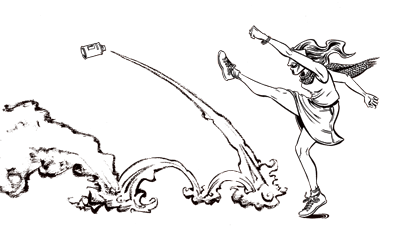Another video in The Bible Project‘s series “How to Read the Bible” came out a couple weeks ago…this one was a late insertion between the “Literary Styles” intro and our first video on Narrative. Tim and Jon felt it was necessary to touch on the “lifetime of reading and rereading” that the original Jewish authors of the bible expected from their readers.
Because the overall message of the video was that biblical writing is intended to be slowly “digested” over time, the frantic style of the previous videos would have been inappropriate…we needed something, well, more “meditative.” And since we were also trying to reemphasize the unique historical origins of this writing style, I decided to turn to ancient art:

Dragon from Babylon’s Ishtar Gate (c. 575 B.C.E.), the inspiration for the dragon in the video.
So far as I know, there really isn’t any surviving Jewish visual art from the Second Temple period, so we were only able to refer to Israel’s contemporaries and near-contemporaries in the middle east–particularly Assyria, Babylon, and Persia, whose stony-eyed relief sculptures had exactly the sort of contemplative stillness that suited the topic. The internet was helpful, but nothing beats D.K. Eyewitness books. Every time I crack this open, I feel like I’m in middle school again.
But because it’s a video and not an actual relief sculpture, we needed to introduce SOME form of movement. We ended up animating all the little patterns in nature and on people’s clothing to give a flickering, almost Las Vegas-like quality to the art. We also tinted the colors using a torchlight effect that I filmed myself by placing some tea lights near a blank wall.
Thanks again to Nyssa Oru, who did a beautiful job aping this semi-hieroglyphic style, as well as creating beautiful faux-medieval and faux-classical art for the opening sequence.
I wanted to briefly respond to a comment left on YouTube regarding the gum-chewing woman in this sequence who is wearing a hijab. One commenter asked if the hijab was “really necessary.” The answer is, obviously not. But she had to be wearing something. My experience and the lessons of wise artists have taught me that when you try to draw contemporary scenes without observing the world around you, the results are generic and boring (and in my own case, about twenty years behind the times! Why is it that, without visual research, I always seem to default to drawing people dressed like it’s 1994?) My time in the comics industry has taught me, as many have succinctly put it, “representation matters.” When I look around me, I do not see a homogenous world, and that includes outward religious or cultural expressions like the hijab. And as a Christian, I’m anticipating and praying for a world in which people “from every nation, from all tribes and peoples and language, stand before the throne of the lamb.” While we were preparing this video, two people in my town of Portland, OR were stabbed to death by a man who saw hijab-wearing women as some kind of alien incursion into his bogus vision of society. In times like these, I think artists should go out of their way to reassert that, on the contrary, women who wear the hijab are an inherent part of our beautifully variegated world. (And thanks to artist and YouTuber Ain Lavendra for the tutorial on how to draw the hijab…I was having a lot of difficulty!)

I had the weird opportunity to draw Katniss Everdeen, Jay Gatsby, and Ignatius Reilly on the same comics page.

Archers from Babylon’s Ishtar Gate, inspiration for the skin and hair color seen in the video, as well as the hypnotizing patterns.







